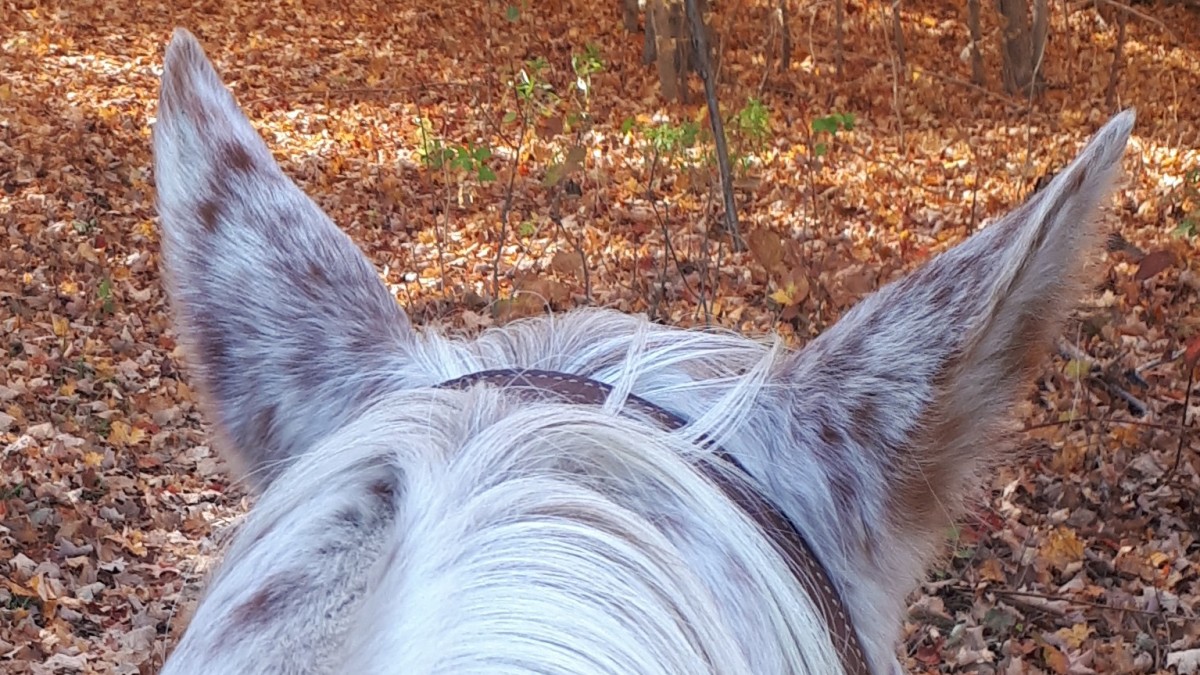COACHING PERSPECTIVES & SUCCESS STRATEGIES
Do You Have Connection?

You need a deeper connection between yourself and the horse. It is more than the clean maneuvers and jumping clean. We want calm, trust and willing.
Do You Have Connection?
Ok riders, when you are out there doing your riding thing, no matter what discipline or activity, where is your connection with your horse? Is it in your reins, between your legs, under your seat? Maybe you think it is a combination of all three. Are you depending on any one or all of those to keep you safe, to have a pleasurable ride, or a successful progression of skills?
What you really need is a deeper connection between yourself and the horse. If you don’t know what that is, or laugh it off as another one of those “natural” horsemanship concepts that you just don’t buy into — please just take a few minutes to reconsider what connection under saddle really means to you.
Here are some common
examples of what “good enough” looks like:
You have
connection when the horse reacts properly in its body, the horse goes
out on trail rides in company with others without upset, the horse
jumps clean, the maneuver feels correct, and the rider doesn’t have
to “wrestle” the horse to stay safe or do an activity.
What many horsewomen are asking for these days is a trusting bond and emotional connection.
Beyond those admirable achievements of “good enough,” to be truly safe and progressive is to have a mental and emotional connection. The horse responds appropriately to your communication and overrides its own natural instincts to freeze or take flight.
I want my horses to be calm (a state of mind), relaxed (a state of body suppleness), and responsive (a state of appropriate responsiveness to my aids). To have all three of these is the connection that I truly enjoy when riding. Yes, that is the ideal.
To progress your horsemanship, you can and should get there every ride. How you establish that state depends a lot on your knowledge and ability both on the line and at liberty, in the daily activities of feeding, turnout and in, leading, saddling and bridling, mounting and warming up. I’m saying that you need this in every daily habit and activity.
During all interactions with your horse in these daily activities, you can benefit by taking note of the degree of tension and reactivity. Ask yourself how long it takes your horse to become connected, and if connection is lost, what specific activity you will use to regain that connection. It will depend on what you’ve practised and what works best for your horse. You can become aware and respectful of your horse’s state of mind and emotion by taking note of their postures, facial expressions, breathing, and muscle tension. Then, when there is a change in your horse’s state, be accepting and appreciate it.
A lot of people want obedience and respect, but that’s not the process — that’s the goal! I prefer to call it cooperative willingness, defined as “deferring to leadership while remaining relaxed and trusting.” Re-read these words and use them as you talk about riding. Make them a part of your dialogue when talking about your horse and training.
Here’s a practical application: You start with lunging and your horse gives you the gaits, transitions, and number of laps you think it needs to be ride-ready. Ask yourself, what are the parameters that you measure the lunge session with?
Mine are these: the horse shows me all the gaits in a tempo that I’m willing to ride. The body of the horse is on the line of the circle it is travelling — not bent to the outside. The topline is stretching forward with the neck down while the legs are moving freely forward. The line is not taut. The horse maintains gait and direction until I give it another cue. Transitions are attentive and clean, followed by maintaining the new gait. I mentally score them “out of 10” as a way to measure connectivity and develop improvements.
I don’t ride until I have an eight-plus on each item. Does this seem like too much to bother with? Your horse will tune into this process very quickly if you stop at the right time. Then, move along to saddling and mounting, and finally the planned ride. The same principles apply to these steps also. A pre-ride check can take five minutes or less.
The last thing to remember is that every time you change the horse’s environment — going from the arena to the outside ring or to the trail — it can change its mental and emotional state. Take note of what you do that gets your horse to the cooperative willingness state. Move into that activity the instant you notice the horse losing its confidence. Stay in that activity until calm, relaxed responsiveness is regained, before proceeding. I am certain that this process will work for you and give you the ability to move beyond the arena, the round pen, or the level of skill that you have now. It takes making this practice your priority.
Remember, the cooperative willingness that signals connection is what you really need and are going to reward. Don’t be fooled by an obedient movement — wait for the calm, relaxed state to manifest and reward that with a break.
More and more, your horse
will want to be in that relaxed state. Lead it there, offer it, and
reward it. The amazing result will be that you see your horse trying
to stay there — and this will be your greatest reward.
Categories: : Essential Skills
 Brenda Robson
Brenda Robson 
